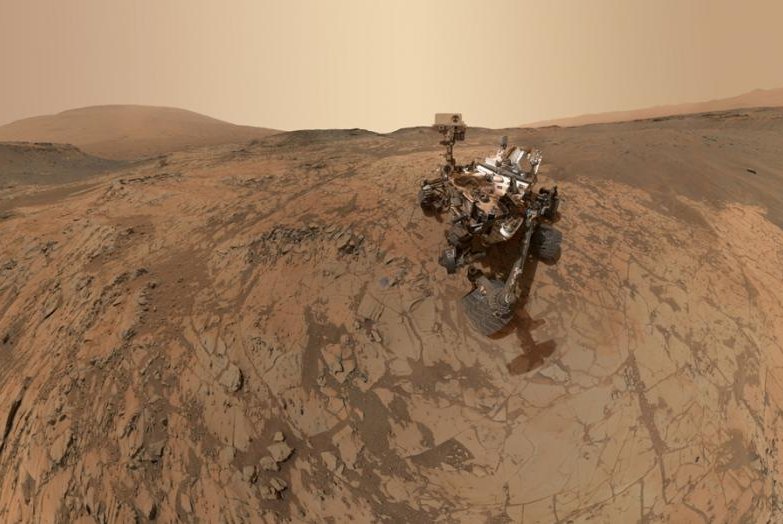1 of 2 | NASA's Curiosity Mars rover on Mount Sharp. Photo by NASA/JPL
WASHINGTON, Feb. 25 (UPI) -- No doubt, the adoration of Earth-bound scientists is inflating an already oversized ego on Mars. But when Curiosity continues to so generously share science-filled selfies and beautiful blue-tinted sunset shots with us Earthlings, it's hard not to be wooed.
The latest self-portrait, shared online by NASA on Wednesday, features the rover atop Mars' Mount Sharp. The rover is featured (unsurprisingly) front and center. But surrounding the robot are geological features and evidence of scientific tests completed.
The annotated version of the rover's selfie highlights the surrounding points of scientific interest, labeling the neighboring hills, cliffs, rocks, peaks and crater rims. Also noted is the rover's previously executed "scuff test," which provided mineral evidence of a time when water likely filled the basin.
Also released by NASA, courtesy of Curiosity, is an image of a sunset as seen from the rover's workstation, known as Mojave -- located in an area called the Pahrump Hills. Sunsets on Earth typically produce a range of orange and red hues. On Mars, however, the distant rays of the setting sun are rendered in array of delicate blues.
The blue sunset was recorded in video form and release as a Vine, earlier this week. NASA shared the short video via Twitter, writing: "Martian sunset, recreated from photos taken by our Mars Opportunity rover."
In 2005, NASA officials wrote about a similar sunset picture: "Dust also scatters blue light in the forward direction, creating a bluish sky glow near the setting Sun."
"Because Mars is farther away, the Sun is less bright and only about two thirds the diameter it appears from Earth," the post continued. "Images like this help atmospheric scientists understand not only the atmosphere of Mars, but atmospheres across the Solar System, including our home Earth."















